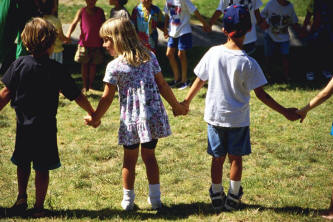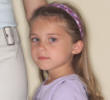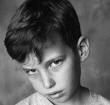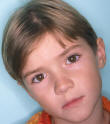Child Mental Health Resources
|
Child Mental Health Resources
Young people can have mental, emotional, and behavioral problems that are real, painful, and costly. These problems, often called "disorders," are sources of stress for children and their families, schools, and communities..
The number of young people and their families who are affected by mental, emotional, and behavioral disorders is significant. It is estimated that as many as one in five children and adolescents may have a mental health disorder that can be identified and require treatment.
Mental health disorders in children and adolescents are caused by biology, environment, or a combination of the two. Examples of biological factors are genetics, chemical imbalances in the body, and damage to the central nervous system, such as a head injury. Many environmental factors also can affect mental health, including exposure to violence, extreme stress, and the loss of an important person.
Families and communities, working together, can help children and adolescents with mental disorders. A broad range of services is often necessary to meet the needs of these young people and their families.
The Disorders
Below are descriptions of particular mental, emotional, and behavioral disorders that may occur during childhood and adolescence. All can have a serious impact on a child's overall health. Some disorders are more common than others, and conditions range from mild to severe. Often, a child has more than one disorder.
This list of disorders must not be used for the purpose of making a diagnosis. It is to be used only as a reference about behavior encountered in the classroom.

 All children feel anxious at times. Many feel stress, for example, when separated from parents; others fear the dark. Some though suffer enough to interfere with their daily activities. Anxious students may lose friends and be left out of social activities. Because they are quiet and compliant, the signs are often missed. They commonly experience academic failure and low self-esteem. All children feel anxious at times. Many feel stress, for example, when separated from parents; others fear the dark. Some though suffer enough to interfere with their daily activities. Anxious students may lose friends and be left out of social activities. Because they are quiet and compliant, the signs are often missed. They commonly experience academic failure and low self-esteem.
As many as 1 in 10 young people suffer from an AD. About 50% with AD also have a second AD or other behavioral disorder (e.g. depression). Adolescent girls are more affected than boys. Etiology is unknown (biological or environmental) but studies suggest that young people are at greater risk if their parents experienced AD. The most common anxiety disorders are:
-
Generalized: extreme, unrealistic worry unrelated to recent events. They are often self-conscious and tense; they may suffer from aches and pains that appear to have no physical basis.
-
Phobias: unrealistic and excessive fears. Specific phobias center on animals, storms, or situations such as being in an enclosed space.
-
Panic Disorder: repeated attacks of intense fear w/o apparent cause. They may be accompanied by pounding heartbeat, nausea or a feeling of imminent death. Some may go to great lengths to avoid the attacks (such as refusing to attend school).
-
Obsessive Compulsive Disorder: being trapped in a pattern of repetitive thoughts and behaviors. These may include hand washing, counting, or arranging and rearranging objects.
-
Post Traumatic Stress Disorder: experiencing strong memories, flashbacks, or troublesome thoughts of traumatic events. These may include events of abuse, violence and/or disaster. They may try to avoid anything associated with event. They may over-react when startled or have sleep disorders.
Fact Sheet For The Classroom - Anxiety Disorders
 Asperger’s is a subset of the autism spectrum disorders. Before our knowledge base expanded it was referred to as “high functioning autism.” It is a neurobiological disorder that impacts behavior, sensory systems, and visual and auditory processing. Students are usually highly verbal and test average to above-average IQ’s. The disorder impacts cognition, language, socialization, sensory issues, visual processing and behavior. There is often a preoccupation with a single subject or activity. They might also display excessive rigidity (resistance to change), nonfunctional routines or rituals, repetitive motor movements, or persistent preoccupation with a part of an object rather than functional use of the whole (i.e. spinning the wheels of a toy car rather than “driving” it around). The most common characteristic occurs with impairment of social interactions, which may include failure to use or comprehend nonverbal gestures in others, failure to develop age-appropriate peer relationships and a lack of empathy. Asperger’s is a subset of the autism spectrum disorders. Before our knowledge base expanded it was referred to as “high functioning autism.” It is a neurobiological disorder that impacts behavior, sensory systems, and visual and auditory processing. Students are usually highly verbal and test average to above-average IQ’s. The disorder impacts cognition, language, socialization, sensory issues, visual processing and behavior. There is often a preoccupation with a single subject or activity. They might also display excessive rigidity (resistance to change), nonfunctional routines or rituals, repetitive motor movements, or persistent preoccupation with a part of an object rather than functional use of the whole (i.e. spinning the wheels of a toy car rather than “driving” it around). The most common characteristic occurs with impairment of social interactions, which may include failure to use or comprehend nonverbal gestures in others, failure to develop age-appropriate peer relationships and a lack of empathy.
Fact Sheet For the Classroom - Asperger's Syndrome
Attention-Deficit Hyperactivity Disorder (ADHD)
 Youth with AD/HD may be overactive. And be able to pay attention on task. They tend to be impulsive and accident-prone. They may answer questions before raising their hand, forget things, fidget, squirm or talk too loudly. On the other hand, some students with this disorder may be quiet and “spacey” or inattentive, forgetful and easily distracted. Youth with AD/HD may be overactive. And be able to pay attention on task. They tend to be impulsive and accident-prone. They may answer questions before raising their hand, forget things, fidget, squirm or talk too loudly. On the other hand, some students with this disorder may be quiet and “spacey” or inattentive, forgetful and easily distracted.
Symptoms may be situation-specific. For example, students with AD/HD may not exhibit some behaviors at home if that environment is less stressful, less stimulating or is more structured than school. Or students may stay on task when doing a project they enjoy, such as art.
An estimated 5% of children have a form of AD/HD. More boys are diagnosed than girls; it is the leading cause of referrals to mental health professionals, SPED, and juvenile justice programs. Students with ADD only, tend to be overlooked or dismissed as “quiet and unmotivated” because they can’t organize their work on time.
Students with AD/HD are at higher risk for learning disorders, anxiety disorder, conduct disorder, and mood disorders such as depression. Without proper treatment children are at high risk for school failure. They may also have difficulty maintaining friendships, and their self-esteem will suffer from experiencing frequent failure because of their disability.
If you suspect AD/HD refer the student for mental health assessment. Many will benefit from medication. This must be managed by an experienced mental health professional (psychiatrist, pediatrician, neurologist) in treating AD/HD. Multi-disciplinary approaches that include family, school and mental health can prove successful.
Children identified at an early age should be monitored because changing symptoms may indicate related disorders such as bipolar, depression, Tourette’s disorder, or underlying conditions such as FASD (Fetal Alcohol).
Remember that AD/HD is a neurobiological disorder. Students can’t get organized or learn social skills on their own, but you can find interventions that greatly increase their capacity to succeed.
Fact Sheet for the Classroom - Attention Deficit Hyperactivity Disorder
 Also know as manic-depressive illness, bipolar disorder, is a brain disorder that causes unusual shifts in a person’s mood energy, and ability to function. The symptoms are severe and can result in damaged relationships, poor job or school performance, and even suicide. More than 2 million adults (1% of the population18 and older) in any given year have bipolar. Children and adolescents can also develop the disorder. Like diabetes, or heart disease, it is a long term illness that requires careful management. Youth with the illness experience very fast mood swings between depression and mania many times a time. Manic children are more likely to be irritable and prone to destructive tantrums than to be happy or elated. Older adolescents tend to develop classic, adult-type episodes and symptoms. Bipolar disorder in youth is often hard to differentiate from symptoms of other disorders (e.g. drug abuse). Effective treatment requires appropriate evaluation and diagnosis. Adolescents with bipolar are at higher risk of suicide. Any talk about of feelings of suicide require immediate referral. Also know as manic-depressive illness, bipolar disorder, is a brain disorder that causes unusual shifts in a person’s mood energy, and ability to function. The symptoms are severe and can result in damaged relationships, poor job or school performance, and even suicide. More than 2 million adults (1% of the population18 and older) in any given year have bipolar. Children and adolescents can also develop the disorder. Like diabetes, or heart disease, it is a long term illness that requires careful management. Youth with the illness experience very fast mood swings between depression and mania many times a time. Manic children are more likely to be irritable and prone to destructive tantrums than to be happy or elated. Older adolescents tend to develop classic, adult-type episodes and symptoms. Bipolar disorder in youth is often hard to differentiate from symptoms of other disorders (e.g. drug abuse). Effective treatment requires appropriate evaluation and diagnosis. Adolescents with bipolar are at higher risk of suicide. Any talk about of feelings of suicide require immediate referral.
Fact Sheet for the Classroom - Bipolar Disorder
 Youth with conduct disorder are highly visible, demonstrating a complicated group of behavioral and emotional problems. Serious, repetitive, and persistent misbehavior is the essential feature. These behaviors fall into 4 main groups: Youth with conduct disorder are highly visible, demonstrating a complicated group of behavioral and emotional problems. Serious, repetitive, and persistent misbehavior is the essential feature. These behaviors fall into 4 main groups:
-
aggressive behavior toward people or animals
-
destruction of property
-
deceitfulness/theft
-
serious violations of rules.
To receive a diagnosis, the youth must have displayed 3 or more characteristic behaviors in the past 12 months. At least 1 must have been evident during the part 6 months. Diagnosing can be a dilemma because youth are constantly changing. Many children with CD also have learning disabilities and about 1/3 are depressed. Many stop exhibiting the behavior problems when treated for depression.
USDHHS estimate between 6 and 16% of males and 2 to 9% of females under 18 have CD that ranges in severity from mild to severe.
Other disorders associated with CD are AD/HD or oppositional defiant (ODD). The majority of youth with CD may have life-long patterns of anti-social behavior and are at higher risk for mood or anxiety disorder. But for many, the disorder may subside in later adulthood.
Social context (poverty, high crime) may influence what we view as anti-social behavior. In these cases, CD may be misapplied to individuals whose behaviors may be protective or exist within cultural context. A child with suspected CD needs to be referred for assessment. If symptoms are mild, the child may receive services and remain in the school environment. More seriously troubled youth, however, may need more specialized educational environments.
Fact Sheet for the Classroom - Conduct Disorder
 All children feel blue or sad at times, but feelings of sadness with great intensity that persist for weeks/months may be a symptom of major depressive disorder or dysthymic disorder (chronic depression). These disorders affect a young person’s thoughts, feeling, behavior, body and can lead to school failure, alcohol/drug abuse and even suicide. All children feel blue or sad at times, but feelings of sadness with great intensity that persist for weeks/months may be a symptom of major depressive disorder or dysthymic disorder (chronic depression). These disorders affect a young person’s thoughts, feeling, behavior, body and can lead to school failure, alcohol/drug abuse and even suicide.
Recent studies reported by USDHHS show that as many as 1 in every 33 children may have depression; among adolescents, the ratio may be as high as 1 in 8. Boys appear to suffer earlier in childhood. During adolescence, the illness is prevalent among girls. Depression is hard to diagnose, more difficult to treat, more severe, and more likely to reoccur than adult forms. Depression also affects a child’s development. A depressed child becomes “stuck” and unable to pass through normal developmental stages. Common symptoms are:
|
|
-
Frequent complaints of aches and pains
-
Thoughts of death or suicide
-
Self-deprecating remarks
-
Persistent boredom, low energy, or poor concentration
-
Increased activity
|
Students who used to enjoy playing with friends may now spend most of their time alone or they may start “hanging out” with a completely different peer group. Activities that were once fun hold no interest. They may talk about dying or suicide. Depressed teens may “self-medicate” with alcohol or drugs.
Children who cause trouble at home or at school may actually be depressed, although they may not seem sad. Younger children may pretend to be sick, be overactive, cling to their parents, seem accident prone, or refuse to go to school. Older children and teens often refuse to participate in family and social activities and stop paying attention to their appearance. They may also be restless, grouchy, or aggressive.
Most mental health professionals believe that depression has a biological origin. Research indicates that children have a greater chance of developing depression if one or both of their parents suffered from this illness.
Fact Sheet for the Classroom - Depression
 Nearly all of us worry about our weight; however, when one becomes so obsessed with their weight and the need to be thin they may develop an eating disorder. The two most common are anorexia nervosa and bulimia nervosa. Once seen in teens and young adults, these disorders are increasingly seen in younger children as well. Children as young as 4 and 5 are expressing the need to diet, and it’s estimated that 40% of 9 year olds have already dieted. Eating disorders aren’t limited to girls- between 10 and 20% of adolescents with ED are boys. Nearly all of us worry about our weight; however, when one becomes so obsessed with their weight and the need to be thin they may develop an eating disorder. The two most common are anorexia nervosa and bulimia nervosa. Once seen in teens and young adults, these disorders are increasingly seen in younger children as well. Children as young as 4 and 5 are expressing the need to diet, and it’s estimated that 40% of 9 year olds have already dieted. Eating disorders aren’t limited to girls- between 10 and 20% of adolescents with ED are boys.
Individuals with anorexia fail to maintain minimally normal body weight. They engage in abnormal eating behavior and have excessive concerns about food. They are intensely afraid of even the slightest weight gain, and their perception of their body shape and size is significantly distorted. Many individuals with anorexia are compulsive and excessive about exercise. Children and teens with this disorder are perfectionists and overachieving. In teenage girls with anorexia, menstruation may cease, leading to the same kind of bone loss suffered by menopausal women.
Youth with bulimia go on eating binges during which they compulsively consume large amounts of food within a short period of time. To avoid weight gain, they engage in inappropriate compensatory behavior, including fasting, self-induced vomiting, excessive exercise, and the use of laxatives, diuretics, and enemas.
Athletes such as wrestlers, dancers, or gymnasts may fall into disordered eating patterns in an attempt to stay thin or “make their weight.” This can lead to a full blown disorder. Adolescents who have eating disorders are obsessed with food. Their lives revolve around thoughts and worries about their weight and their eating. Youth who suffer from eating disorders are at risk for alcohol and drug abuse as well as depression.
If you suspect a student may be suffering from an eating disorder, refer that student immediately for a mental health assessment. Without medical intervention, an individual with an eating disorder faces serious health problems and, in extreme cases, death.
Fact Sheet for the Classroom - Eating Disorder
Fetal Alcohol Spectrum Disorder (FASD)
 Fetal Alcohol Spectrum Disorder refers to the brain damage and physical birth defects caused by women drinking alcohol during pregnancy. Fetal Alcohol Syndrome (FAS), can include growth deficiencies, central nervous system dysfunction that may include low IQ or mental retardation, and abnormal facial features (e.g. small eye openings, small upturned nose, thin upper lip, small lower jaw, low set of ears, and an overall small head circumference). Fetal Alcohol Spectrum Disorder refers to the brain damage and physical birth defects caused by women drinking alcohol during pregnancy. Fetal Alcohol Syndrome (FAS), can include growth deficiencies, central nervous system dysfunction that may include low IQ or mental retardation, and abnormal facial features (e.g. small eye openings, small upturned nose, thin upper lip, small lower jaw, low set of ears, and an overall small head circumference).
Children lacking the distinguishing facial features may be diagnosed with Fetal Alcohol Effects (FAE). A diagnosis of FAE may make it more difficult to meet the criteria for many services or accommodations. The Institute of Medicine has recently coined a new term to describe the condition in which only the central nervous system abnormalities are present from prenatal alcohol exposure: Alcohol Related Neuro-developmental Disabilities (ARND).
Because FAS/FAE are irreversible, lifelong conditions, children with FASD have severe challenges that may include developmental disabilities (e.g. speech and language delays) and learning disabilities. They are often hyperactive, poorly coordinated, and impulsive. They will most likely have difficulty with daily living skills, including eating (as a result of missing tooth enamel, heightened oral sensitivity, or an abnormal gag reflex).
Learning is not automatic for them. Due to organic brain damage, memory retrieval is impaired, making learning difficult. Many of these children have problems with communication, especially social communication, even though they may have strong verbal skills. They often have trouble interpreting actions and behaviors of others or reading social cues. Abstract concepts are especially troublesome. They often appear irresponsible, undisciplined, and immature as they lack critical thinking skills such as judgment, reasoning, problem solving, predicting, and generalizing. In general, any learning is from a concrete perspective, but even then only through ongoing repetition.
Because FAS/FAE children don’t internalize morals, ethics, or values (these are abstract concepts), they don’t understand how to do or say the appropriate thing. They also do not learn from past experience; punishment doesn’t seem to faze them, they often repeat the same mistakes. Immediate wants or needs take precedence, and they don’t understand the concept of cause and effect or that there are consequences to their actions. These factors may result in serious behavior problems, unless their environment is closely monitored, structured, and consistent.
Fact Sheet for the Classroom - Fetal Alcohol Spectrum Disorder
Obsessive-Compulsive Disorder (OCD)
 Obsessive-compulsive disorder (OCD) has n neurobiological basis. This means it is a biological disease of the brain, just as diabetes is a biological disease of the pancreas. OCD is not caused by bad parenting, poverty, or other environmental factors. Obsessive-compulsive disorder (OCD) has n neurobiological basis. This means it is a biological disease of the brain, just as diabetes is a biological disease of the pancreas. OCD is not caused by bad parenting, poverty, or other environmental factors.
Children with OCD may have obsessive thoughts and impulses that are recurrent, persistent, intrusive, and senseless- they may, for instance, worry about contamination from germs. They may also perform repetitive behaviors in a ritualistic manner- for example, they may engage in compulsive hand washing. An individual with OCD will often perform these rituals, such as hand washing, counting, or cleaning, in an effort to neutralize the anxiety caused by their obsessive thoughts.
OCD is sometimes accompanied by other disorders, such as substance abuse, attention-deficit/hyperactivity disorder, eating disorders, or another anxiety disorder. When a student has another disorder, the OCD is more difficult to treat or diagnose. Symptoms of OCD may coexist or be part of a spectrum of other brain disorders such as Tourette’s disorder or autism.
Research done at the National Institute of Mental health suggests that OCD in some individuals may be an auto-immune response triggered by antibodies produced to counter strep infection. This phenomenon is known as PANDAS.
Students with OCD often experience high levels of anxiety and shame about their thoughts and behavior. Their thoughts and behaviors are so time-consuming that they interfere with everyday life.
| Common compulsive behaviors are: |
Common obsessions are: |
-
Cleaning and washing
-
Hoarding
-
Touching
-
Avoiding
-
Seeking pressure
-
Checking
-
Counting
-
Repeating
-
Ordering
-
Or arranging
|
-
Aggressions
-
Contamination
-
Sex
-
Loss
-
Religion
-
Orderliness and symmetry
-
Doubt
|
Children who show symptoms of OCD should be referred for a mental health assessment. Behavior therapy and pharmacological treatment have both proven successful.
Fact Sheet for the Classroom - Obsessive Compulsive Disorder
Oppositional Deviant Disorder (ODD)
 Students with ODD seem angry much of the time. They are quick to blame others for mistakes and act in negative, hostile, and vindictive ways. All students exhibit these behaviors at times, but in those with ODD, these behaviors occur more frequently than is typical in individuals of comparable age and level of development. Students with ODD seem angry much of the time. They are quick to blame others for mistakes and act in negative, hostile, and vindictive ways. All students exhibit these behaviors at times, but in those with ODD, these behaviors occur more frequently than is typical in individuals of comparable age and level of development.
Students with ODD generally have poor peer relationships. They often display behaviors that alienate them from their peers. In addition, these students may have an unusual response to positive reinforcement or feedback. For instance, when given some type of praise they may respond by destroying or sabotaging the project that they were given recognition for.
Some students develop ODD as a result of stress and frustration from divorce, death, loss of family, or family disharmony. ODD may also be a way of dealing with depression or the result of inconsistent rules and behavior standards.
If not recognized and corrected early, oppositional and deviant behavior can become ingrained. Other mental health disorders may, when untreated, lead to ODD. For example, a student with AD/HD may exhibit signs of ODD due to the experience of constant failure at home and school.
Fact Sheet for the Classroom - Oppositional Deviant Disorder
Pervasive Developmental Disorders (PDD) (also known as autisim)
 PDD, the acronym for pervasive developmental disorders, includes Rett’s Syndrome, childhood disintegrative disorder, and Asperger’s Syndrome. Pervasive developmental disorder not otherwise specified (PDD-NOS) also belongs to this category. PDD, the acronym for pervasive developmental disorders, includes Rett’s Syndrome, childhood disintegrative disorder, and Asperger’s Syndrome. Pervasive developmental disorder not otherwise specified (PDD-NOS) also belongs to this category.
Autistic disorder belongs to the category of disorders known as PDD. According to the USDHHS, 1 in 1,000 to 1 in 1,500 have autism or a related condition. Autism appears in the first 3 years of life and is 4 times more prevalent in boys than girls. It occurs in all racial, ethnic, and social groups. Autism is a neurologically based developmental disorder; its symptoms range from mild to severe and generally last throughout a person’s life. The disorder is defined by a certain set of behaviors, but because a child can exhibit any combination of the behaviors in any degree of severity, no 2 children with autism will act the same.
The terminology can be confusing because over the years autism has been used as an umbrella term for all forms of PDD. This means, for example, that a student with Asperger’s may be described as having a mild form of autism, or a student with PDD-NOS may be said to have autistic- like tendencies. Nationally, these are all known as autism spectrum disorders.
Although the American Psychiatric Association classifies all forms of PDD as “mental illness,” these conditions often affect children in much the same way a developmental disability would. Some states recognize autism and Rett’s as developmental disabilities (DD), which means that children with these conditions are eligible for case management and other DD services. Children with Asperger’s, childhood disintegrative disorder, or PDD-NOS may or may not be eligible- depending on the specific state law.
Diagnosis of autism and other forms of PDD is based on observation of a child’s behavior, communication, and developmental level. According to the Autism Society of America, development may appear normal in some children until age 24-30 months; in others, development is more unusual from early infancy. Delays may be seen in the following areas:
-
Communication: Language develops slowly or not at all. Children use gestures instead of words or use words inappropriately. Parents may also notice a short attention span.
-
Social Interaction: Children prefer to be alone and show little interest in making friends. They are less responsive to social cues such as eye contact.
-
Sensory Impairment: Children may be overly sensitive or under-responsive to touch, pain, sight, smell, hearing, or taste and show unusual reactions to these physical sensations.
-
Play: Children do not create pretend games, initiate others, or engage in spontaneous or imaginative play.
-
Behavior: Children may exhibit repetitious such as rocking back and forth or head banging. They may be very passive or overactive; lack of common sense and upsets over small changes in the environment or daily routine are common. Some children are aggressive and self-injurious. Some are severely delayed in areas such as understanding personal safety.
A child who is suspected to have autistic disorder should be evaluated by a multidisciplinary team. This team may be comprised of a neurologist, psychiatrist, developmental pediatrician, speech/language therapist, and learning specialist familiar with autism spectrum disorders.
Early intervention is important because the brain is more easily influenced in early childhood. Children with autism respond well to highly structured, specialized education and behavior modification programs tailored to their individual needs. Schools need to seek the assistance of trained professionals in developing a curriculum that will meet the child’s specific needs. Good collaboration and communication between school personnel and parents is very important and can lead to increased success.
Fact Sheet for the Classroom - Pervasive Developmental Disorder
Post Traumatic Stress Disorder (PTSD)
 Children who are involved in or who witness a traumatic event that involved intense fear, helplessness, or horror are at risk for developing PTSD. The event is usually a situation where someone’s life has been threatened or severe injury has occurred, such as a serious accident, abuse, violence, or a natural disaster. In some cases, the “event” may be a re-occurring trauma, such as continuing domestic violence. Children who are involved in or who witness a traumatic event that involved intense fear, helplessness, or horror are at risk for developing PTSD. The event is usually a situation where someone’s life has been threatened or severe injury has occurred, such as a serious accident, abuse, violence, or a natural disaster. In some cases, the “event” may be a re-occurring trauma, such as continuing domestic violence.
After the event, children may initially be agitated or confused. Eventually this develops into denial, fear, and even anger. They may withdraw and become unresponsive, detached, and depressed. Often they become emotionally numb, especially if they have been subjected to repeated trauma. They may lose interest in things they used to enjoy.
Students with PTSD often have persistent frightening thoughts and memories of the experience. They may re-experience the trauma through flashbacks or nightmares. These occur particularly on the anniversary of the event or when a child is reminded of it by an object, place, or situation. During a flashback, the child may actually lose touch with reality and reenact the event.
PTSD is diagnosed if the symptoms last more than 1 month. Symptoms usually begin within 3 months of the trauma, but occasionally not until years after; they may last from a few months to years. Early intervention is essential, ideally immediately following the trauma. If the trauma is not known, then treatment should begin when symptoms of PTSD are first noticed. Some studies show that when children receive treatment soon after the trauma, symptoms of PTSD are reduced.
A combination of treatment approaches is often used for PTSD. Various forms of psychotherapy have been shown effective, including cognitive-behavioral, family, and group therapies. To help children express their feelings, play therapy and art therapy can be useful. Exposure therapy is a method where the child is guided to repeatedly re-live the experience under controlled conditions and to eventually work through and cope with their trauma. Medication may also be helpful in reducing agitation, anxiety, depression or sleep disturbances.
Support from family, school, friends, and peers can be an important part of recovery for children with PTSD. With sensitivity, support, and help from mental health professionals, a child can learn to cope with their trauma and go on to lead a healthy and productive life.
Fact Sheet for the Classroom - Post-Traumatic Stress Disorder
Reactive Attachment Disorder (RAD)
 The essential feature of reactive attachment disorder (RAD) is a markedly disturbed and developmentally inappropriate social relatedness with peers and adults in most contexts. RAD begins before age 5 and is associated with grossly inadequate or pathological care that disregards the child’s basic emotional and physical needs. In some cases, it is associated with repeated changes of a primary caregiver. The essential feature of reactive attachment disorder (RAD) is a markedly disturbed and developmentally inappropriate social relatedness with peers and adults in most contexts. RAD begins before age 5 and is associated with grossly inadequate or pathological care that disregards the child’s basic emotional and physical needs. In some cases, it is associated with repeated changes of a primary caregiver.
The term “attachment” is used to describe the process of bonding that takes place between infants and caregivers in the first 2 years of life, and most important, the first 9 months of life. When a caregiver fails to respond to a baby’s emotional and physical needs, responds inconsistently, or is abusive, the child loses the ability to form meaningful relationships and the ability to trust.
The Diagnostic and Statistical Manual of Mental Disorders (DSM-IV) describes two types of RAD: “inhibited” and “disinhibited.” Inhibited RAD is the persistent failure to initiate and respond to most social interactions in a developmentally appropriate way. Disinhibited RAD is the display of indiscriminate sociability or a lack of selectivity in the choice of attachment figures (excessive familiarity with relative strangers by making requests and displaying affection).
Aggression, either related to a lack of empathy or poor impulse control, is a serious problem with these students. They have difficulty understanding how their behavior affects others. They often feel compelled to lash out and hurt others, including animals, smaller children, peers, and siblings. This aggression is frequently accompanied by a lack of emotion or remorse.
Children with RAD may show a wide range of emotional problems such as depressive and anxiety symptoms or safety seeking behaviors. To feel safe these children may seek any attachments—they may hug virtual strangers, telling them, “I love you.” At the same time, they have an inability to be genuinely affectionate with others or develop deep emotional bonds. Students may display “soothing behaviors” such as rocking and head banging, or biting, scratching, or cutting themselves. These symptoms will increase during times of stress or threat.
Fact Sheet for the Classroom - Reactive Attachment Disorder
 Schizophrenia is a medical illness that causes a person to think and act strangely. It is rare in children less than 10 years of age and has its peak age of onset between the ages of 16 and 25. This disorder affects about 1 percent of the population, and thus middle and high school teachers will likely see children who are in the early stages of the illness. Schizophrenia is a medical illness that causes a person to think and act strangely. It is rare in children less than 10 years of age and has its peak age of onset between the ages of 16 and 25. This disorder affects about 1 percent of the population, and thus middle and high school teachers will likely see children who are in the early stages of the illness.
Schizophrenia can be difficult to recognize in its early phases, and the symptoms often are blurred with other psychiatric disorders.
Schizophrenia usually comes on gradually in what is known as the prodrome, and teachers are often the first to notice the early signs. The early signs are usually non-specific. For example, students who once enjoyed friendships with classmates may seem to withdraw into a world of their own. They may say things that don’t make sense and talk about strange fears and ideas. Students may also show a gradual decline in their cognitive abilities and struggle more with their academic work. Since the disorder can come on quite gradually, it may be difficult to appreciate this decline in cognition without a longitudinal perspective over several academic years. The typical prodromal period lasts about 2 to 3 years. Some children show difficulties with attention, motor function, and social skills very early in life, before the prodrome, whereas others have no problems at all before the illness sets in.
The symptoms of schizophrenia include hallucinations (hearing and seeing things that are not there), delusions (fixed false beliefs); and difficulties in organizing their thoughts. A student may talk and say little of substance or the child may have ideas or fears that are odd and unusual (beyond developmental norms). Many, but not all individuals with schizophrenia may show a decline in their personal hygiene, develop a severe lack of motivation, or they may become apathetic or isolative. During adolescence the illness is not fully developed, and thus it is at times difficult to differentiate schizophrenia from a severe depression, substance abuse disorder, or bipolar affective disorder. Students who show signs of schizophrenia need a good mental health assessment.
Early diagnosis and treatment of schizophrenia is important. About 50 percent of people with schizophrenia will attempt suicide; 10 to 15 percent will succeed. Young people with this disease are usually treated with a combination of medication and individual and family therapy. They may also participate in specialized programs. Medications can be very helpful for treating the hallucinations, delusions, and difficulties in organizing thoughts. Unfortunately, the difficulties with motivation, personal hygiene, apathy, and social skills are often the least responsive to medications.
The cause of schizophrenia is not known, although it is believed to be a combination of genetic and environmental factors. The exact environmental factors that contribute to the development of schizophrenia are also not known.
Fact Sheet for the Classroom - Schizophrenia
 Tourette’s disorder is a neurological disorder that has dramatic consequences for some 200,000 Americans and affects an approximate additional 2 million to some degree. Boys identified with Tourette’s disorder outnumber girls 3 to 1; the disorder affects all races and ethnic groups. Researchers have traced the condition to a single abnormal gene that predisposes the individual to abnormal production or function of dopamine and other neurotransmitter in the brain. Although Tourette’s disorder is classified as a mental health disorder, it is usually treated by a neurologist as well as a psychiatrist. Tourette’s disorder is a neurological disorder that has dramatic consequences for some 200,000 Americans and affects an approximate additional 2 million to some degree. Boys identified with Tourette’s disorder outnumber girls 3 to 1; the disorder affects all races and ethnic groups. Researchers have traced the condition to a single abnormal gene that predisposes the individual to abnormal production or function of dopamine and other neurotransmitter in the brain. Although Tourette’s disorder is classified as a mental health disorder, it is usually treated by a neurologist as well as a psychiatrist.
The disorder is still poorly recognized by health professionals. About 80 percent of people with Tourette’s disorder diagnose themselves or are diagnosed by family members after learning about the disorder in the media. Many people have symptoms mild enough that they never seek help; many others find their symptoms subside after they reach adulthood. Indicators of Tourette’s disorder include:
-
The presence of multiple motor and vocal tics, although not necessarily simultaneously
-
Multiple bouts of tics every day or intermittently for more than a year
-
Changes in the frequency, number, and kind of tics and in their severity
-
Marked distress or significant impairment in social, occupational, or other areas of functioning, especially under stressful conditions
-
Onset before age 18
An estimated 25 percent of students in the U. S. have a tic at some time in their life. Not all students with tics have Tourette’s disorder, although they may have a related “tic disorder.”
Tics may be simple (for example, eye blinking, head jerking, coughing, snorting) or complex (for example, jumping, swinging objects, mimicking other people’s gestures or speech, rapid repetitions of a word or phrase). In fact, the range of tics exhibited by people with Tourette’s disorder is so broad that family members, teachers, and friends may find it hard to believe that these actions or vocalizations are not deliberate.
Like someone compelled to cough or sneeze, people with Tourette’s disorder may feel an irresistible urge to carry out their tics. Others may not be aware of the fact they are ticking. Some people can suppress their tics for hours at a time, but this leads to stronger outbursts of tics later on. Often, children “save up” their tics during school hours and release them when they return home and feel safe from harassment or teasing.
Somewhere between 50 to 70 percent of students with Tourette’s disorder have related learning disabilities, attention-deficit/hyperactivity disorder (AD/HD), obsessive-compulsive disorder or difficulties with impulse control. Sensory integration problems may explain some behaviors. Depression and anxiety may underlie more visible symptoms.
Fact Sheet for the Classroom - Tourette's Disorder
|
Web Site
|
General Overview |
| Helping America’s Youth (Go to “Community Guide”. Then “Search for programs to help youth”) |
Overview of all programs for prevention and intervention for social/mental health. You can search by key word, by Protective or risk factor. Also on the site read about how the programs were rated for “scientifically demonstrated”
|
| National Association of School Psychologists (Go to “Educators” for mental health references: PDF of Special Education NEXUS briefing 3-15-2007) |
Resources for educators related to mental health facts and interventions |
National Association of Mental Illness (Go to “Inform yourself”, and then “About Mental Illness”, scroll down to the bottom of the page “By Illness”)
|
|
| Coalition of Evidence Based Policy
(Social Programs:
- Scroll down to “Interventions” scroll down to “Mental Health”.
- Also, Scroll down “K-12”.
- Also, Scroll down “Early Childhood”)
|
Group Cognitive Behavioral Therapy (Depression prevention program for youth at elevated risk of serious depression) |
Promising Practice Network on Children, Families, & Communities (“Programs”) |
Overview of programs/practices. There are links to find by outcomes, or indicators, topic, evidence level |
Center for Effective Collaboration & Practice (This is a link for “briefs” for families on best practice. Also “Mental Health”) |
Overview of Best Practices. Second link has links to mental health topics. Site is still under development. (also has mini-webs) |
Association for Children’s Mental Health |
For Families (pdf 2004) Evidence Based Practice: Beliefs, Definitions, and Suggestions. |
United States Department of Health & Services – Substance Abuse and Mental Health Services Administration (Go to “Resources”, then “Mental Health Locator”, click on “KS”):
|
Directory for locating mental health services in each state. In addition a number of resources and interventions.
|
National Association of Social Workers (NASW)-“One Teen at a Time Campaign” (Go to Behavioral health then to Adolescent health) |
Includes resources and tools for professionals, parents and teens in following areas; school bullying, social skills, self esteem, dating/relationships, diversity |
Social and Rehabilitation Services Health Care Policy on Mental Health –State agency |
Examples of information that can be found are resources for adults, children, Governors Mental Health Services Planning Council, Mental Health provider information, State hospitals |
Association of Community Mental Health Centers of Kansas, Inc. |
Provides information on Community Mental Health Centers, Policy, and Mental Health Information |
Keys for Networking |
Provide support and information to families of children and adolescents with serious emotional , behavioral, or mental disorders. |
|